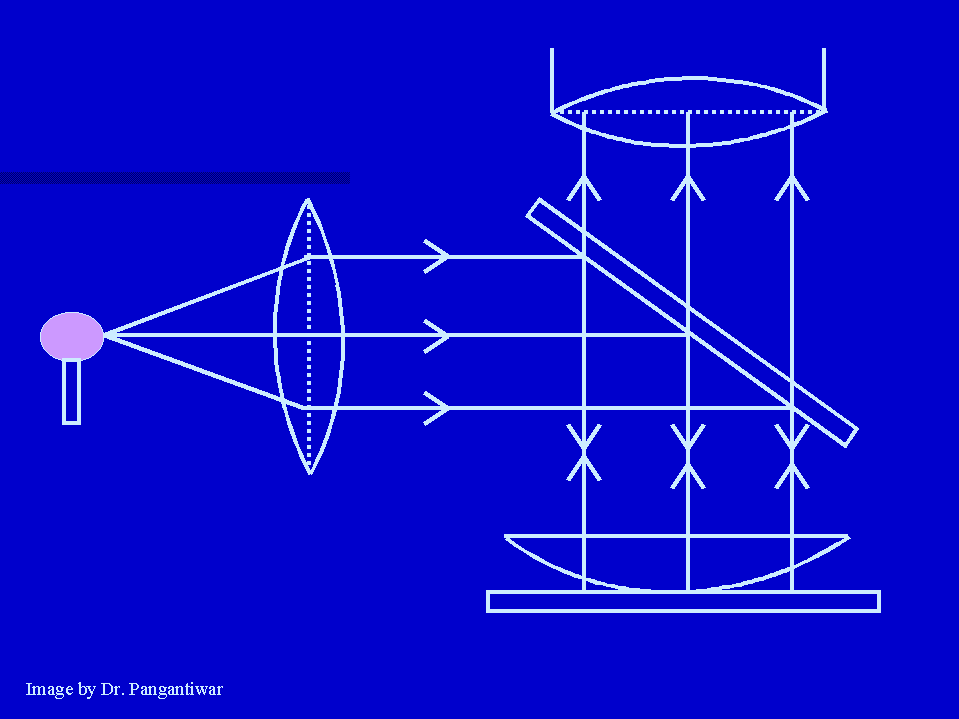
EXPERIMENT NO. 4
AIM
:- To determine the radius of curvature of a plano-convex lens using Newton's rings methodAPPARATUS :- Newton’s rings setup consisting of a planoconvex lens and a plane glass plate fixed in a suitable holder, a sodium vapour lamp and a travelling microscope.
FORMULA :-
R = [(Dm)2 - (Dn)2] / [4 (m-n) Lamda]
FIGURES :-


PROCEDURE:-
The apparatus is arranged as shown in figure. The lens and glass plate system is examined in reflected light to see whether interference fringes are formed or not and whether they are circular or not. Adjustments are to be done till satisfactory fringe system of perfect circular shape with a dark spot at the centre is obtained. Then the system is kept under microscope. The microscope is focussed to get clear dark and bright fringes in the field of view.
The least count of the microscope is determined.
First, the microscope is adjusted so that the centre of the cross wires coincides with the central dark spot of the fringe system. The microscope is then moved slowly either towards left or right of the centre. While the microscope is moved, the number of dark rings are counted say, upto 20. At the 20 th dark ring the microscope is stopped and its motion is reversed. It is brought back to the position of 18 th ring. The vertical cross wire is adjusted such that it will be tangential to the 18 th dark ring. In this position the reading of the microscope is noted.The microscope is then moved to the 17 th dark ring such that the vertical cross wire is again tangential to the ring. The reading of the microscope is noted. The above process is continued till 5 th dark ring is reached. After taking the reading for the 5 th ring the microscope is moved in the same direction on to the opposite side of the centre. The microscope is moved till the 5 th dark ring on the opposite side is reached. The reading is taken as before for the 5 th dark ring. The measurements are continued on the opposite side till 18 th dark ring is reached. The observations are noted in table.
|
Sr. |
No. of the ring |
LHS |
RHS |
Dm (cm) |
(Dm)2
|
||||
|
MSR |
VSD |
TR1 |
MSR |
VSD |
TR2 |
||||
|
1 |
20 |
||||||||
GRAPH :-
A graph is plotted for square of the diameter versus the the number of the dark ring. A straight graph is obtained.
CALCULATIONS:-
Slope of the graph is calculated. The slope of the graph gives the value of [(Dm)2 - (Dn)2] / (m-n). Then the radius of curvature is calculated from the formula using the values obtained above.
RESULT:-
The radius of curvature of lens is obtained as cm.
PRECAUTIONS:-